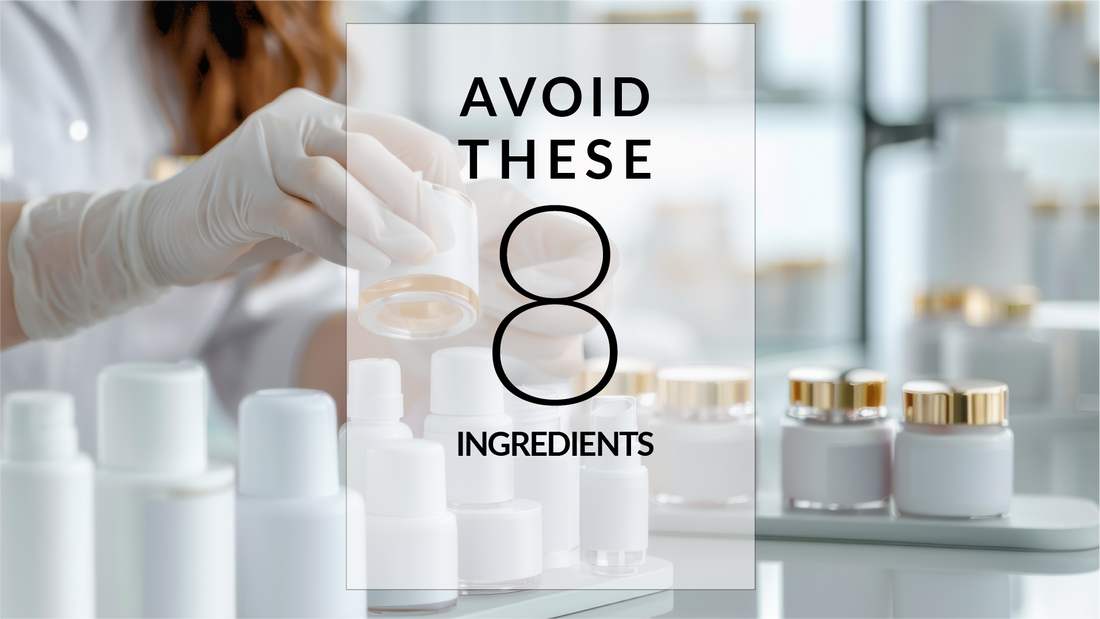
8 Toxic Skincare Ingredients to Avoid for Healthy Skin
In today’s world, most of us are increasingly conscientious about what we put in our bodies, yet what we put on our bodies is just as important, and often overlooked. Skin, our body’s largest organ, readily absorbs what is applied to it, making ingredient awareness crucial.
“I am not a doctor or a scientist but a concerned mother, wife, grandmother, and daughter passionate about protecting my family and friends from harmful ingredients. I have spent the last four years studying the ingredients and potential dangers of consumer goods and gladly share the information when I have the opportunity.” -Debbi Barber, Founder, Vitali Skincare
Skin Care without Compromise
Vitali believes in restoring healthy skin at the cellular level without compromise to your overall health. Thousands of commercial products contain chemicals linked to cancer, birth defects, reproductive harm, and other serious health issues. The cosmetics industry faces very little regulation, yet the Environmental Working Group (EWG) estimates that American women use an average of six personal care products containing 85 different chemicals each day, with men not far behind. Many of these products are applied directly to the skin, where ingredients are absorbed into the bloodstream. This is alarming, and you owe it to yourself to make informed choices.
So, Which Ingredients Should You Avoid in Your Skin Care Routine?
Not all skincare ingredients are safe, and some can have lasting effects on your health. Here are the ones you should watch out for when reviewing product labels. Let’s break it down.
1. Fragrance
While many of us love nice-smelling things, fragrance (note: This excludes essential oils) should raise a red flag. The FDA does not regulate synthetic fragrances in the United States, and according to the EWG, more than 3,100 chemicals may be used under this umbrella. These chemicals can penetrate the skin and enter the bloodstream, with unknown effects on both short- and long-term health.
Because manufacturers are not required to list fragrance ingredients on labels, you can never be certain what you’re being exposed to. Look out for “fragrance,” “parfum,” “eau de toilette,” “perfume,” and “aroma” on ingredient lists.
Fragranced products have also shown adverse health effects in approximately 35% of people, ranging from migraines to respiratory difficulties, according to research.
2. Phthalates
Often hidden within “fragrance,” phthalates are endocrine disruptors linked to early puberty in both girls and boys, reduced sperm count in men, and potential harm to brain development in children. They are used in cosmetics as lubricants and can be found in moisturizers, shampoos, hair sprays, and nail polish.
3. Parabens (Methyl, Butyl, Propyl, Ethyl)
These preservatives are hormone disruptors. Parabens are probably the most familiar ingredients to avoid due to a 2004 research paper that found traces of parabens in breast cancer tissue samples. They are commonly found in moisturizers and deodorants.
4. Formaldehyde
Despite decades of research that classifies it as a known carcinogen, formaldehyde still appears in many personal care products. Short-term exposure can cause skin irritation, breathing difficulties, watery eyes, and burning in the nose and throat. Long-term exposure has been linked to cancer and central nervous system complications. It is often used as a preservative in nail polish, makeup, lotions, and deodorants.
5. PFAS (Per- and Polyfluoroalkyl Substances)
These "forever chemicals" are still being studied, but preliminary research links them to cancer, reproductive harm, immune system damage, increased cholesterol levels, liver enzyme changes, and decreased vaccine response in children.
According to research scientist and green cosmetic chemist, Yashi Shrestha, "They're fluorinated chemicals in sunscreens, hair products, and shaving creams.”
6. Oxybenzone (Benzophenone-3 or BP-3)
Oxybenzone is an organic compound that stabilizes and strengthens the color and scent of skincare products. This UV-absorbing chemical is common in sunscreens and makeup with SPF.
It quickly dissolves into lotions and creams, producing an easily absorbed product that protects the skin from the sun, but this quick absorption may actually be cause for concern. Oxybenzone can accumulate in the body, eventually leading to potentially toxic levels which may affect the endocrine system. In addition, it’s known to cause skin allergies, redness, and irritation, and could potentially contribute to skin and breast cancer.
7. Chemical Sunscreens (beyond Oxybenzone)
Almost 300 products EWG reviewed contain ingredients that have been shown to be harmful to human health and aquatic life. Look for mineral sunscreens containing zinc oxide and titanium dioxide, which are generally considered safer.
8. Artificial Colors
These additives are used to enhance a product's physical appearance. They often also cause inflammation, irritation, and redness, clog pores, disrupt skin’s natural oil balance and are especially risky for those with sensitive or acne-prone skin.
Take Control of Your Health, Starting with Your Skin
Taking control of your health includes understanding the ingredients in your skin care. Do your research, read labels carefully, and take ownership of your ability to make informed choices. Choose products with safe ingredients whenever possible.
Vitali was created to remove the guesswork by offering products free from toxic ingredients, crafted with proven, science-backed formulations you can trust. If you’re ready to care for your skin without compromise, explore Vitali’s collection and see how powerful truly clean skincare can be.
EXPLORE OUR RANGE OF SAFE & EFFECTIVE PRODUCTS TODAY, AND DISCOVER THE RADIANT HEALTHY SKIN YOU DESERVE.
Join us in embracing a world where healthy skin and overall well-being
go hand in hand.
Experience the Vitali Difference
You can view our full ingredients lists for all of our products on our website.

